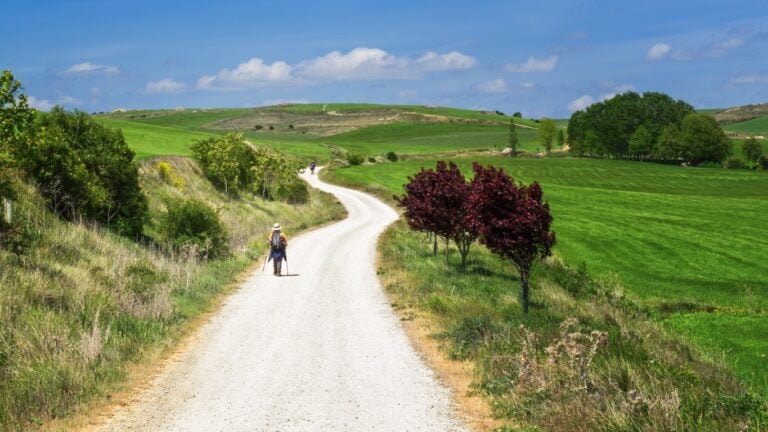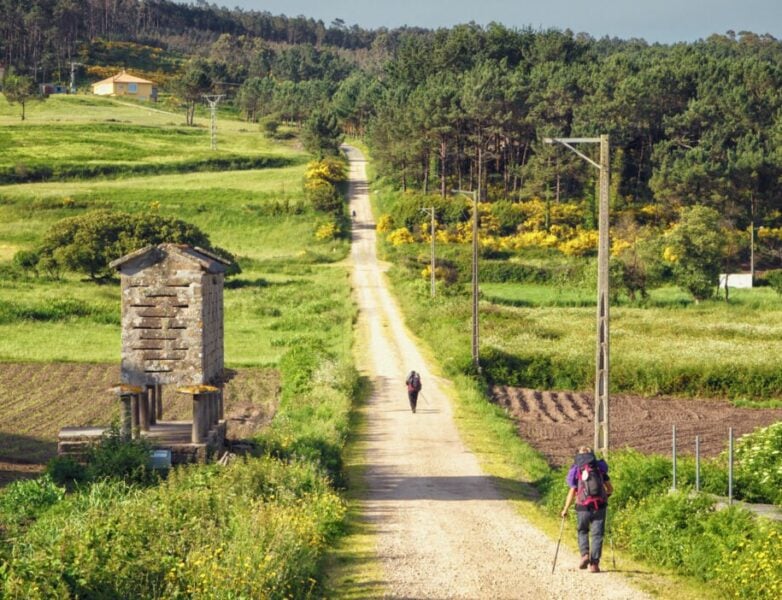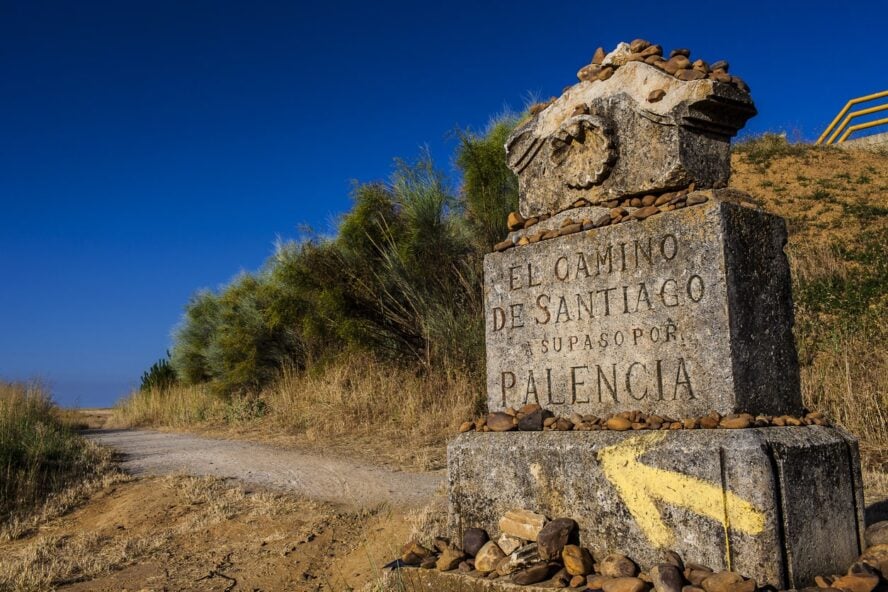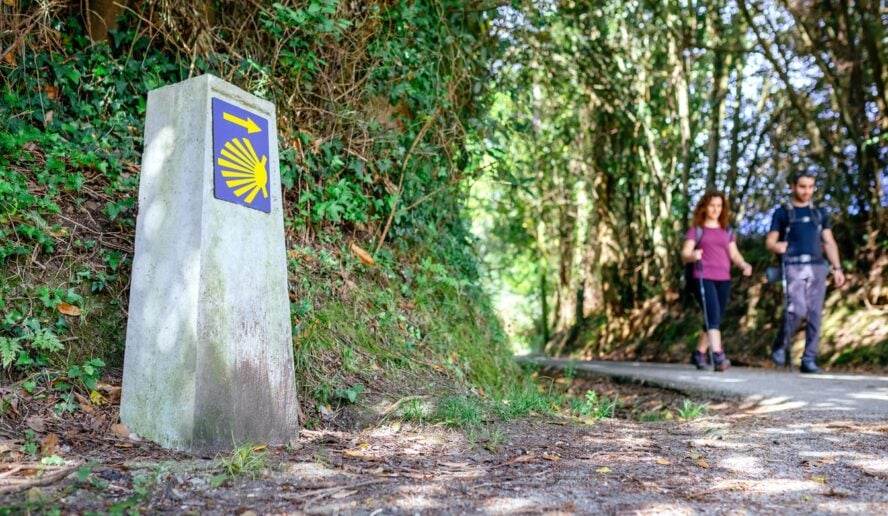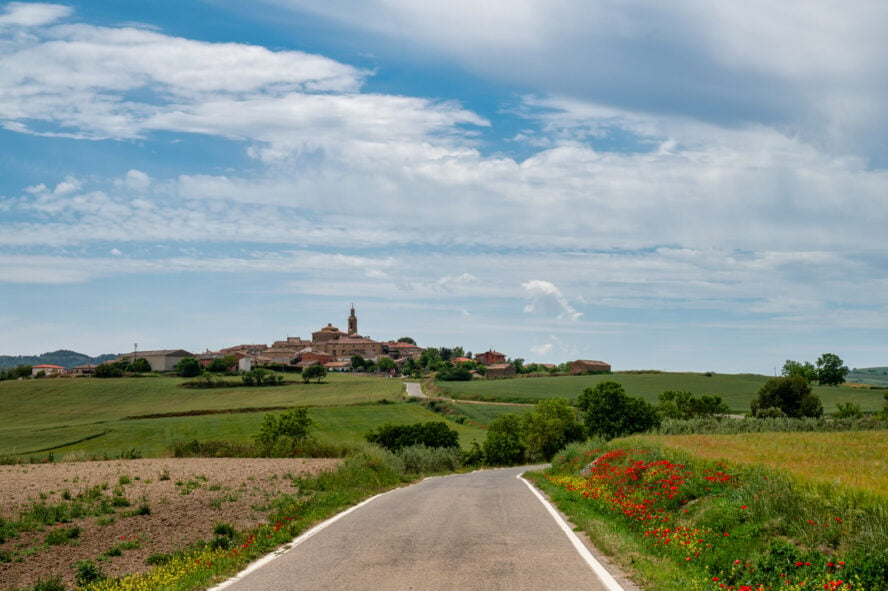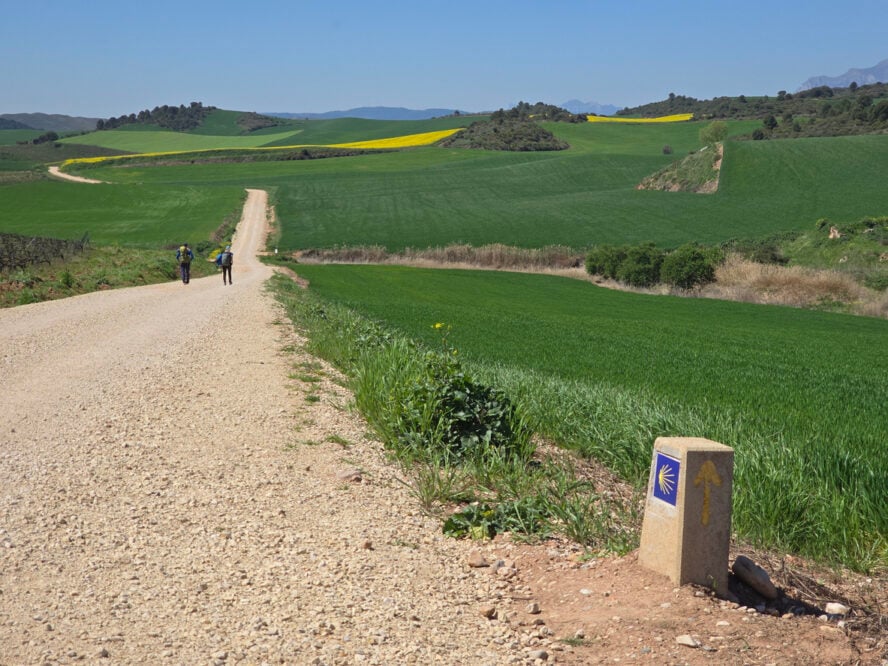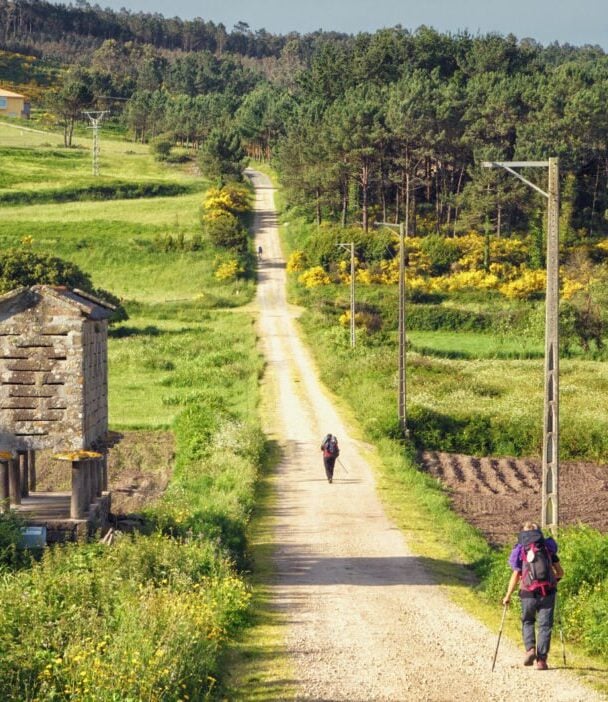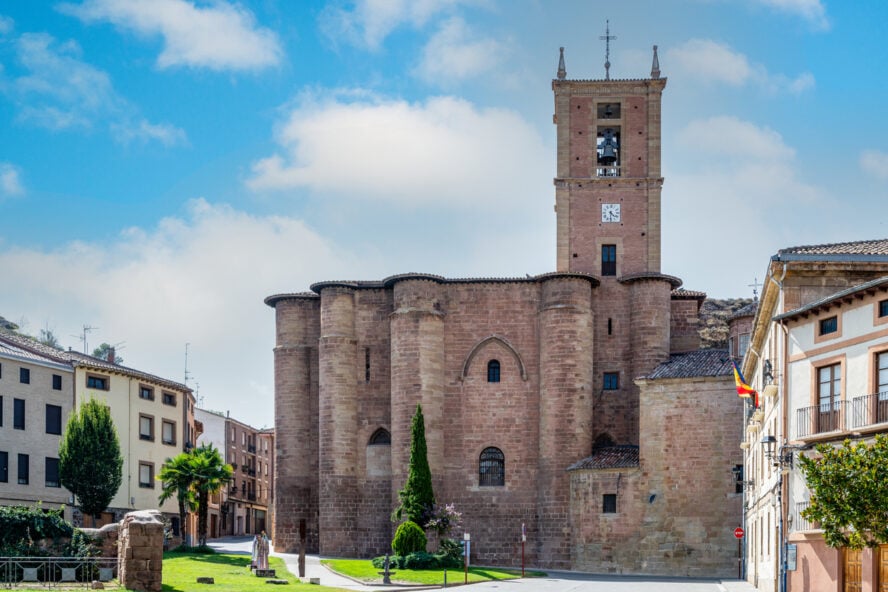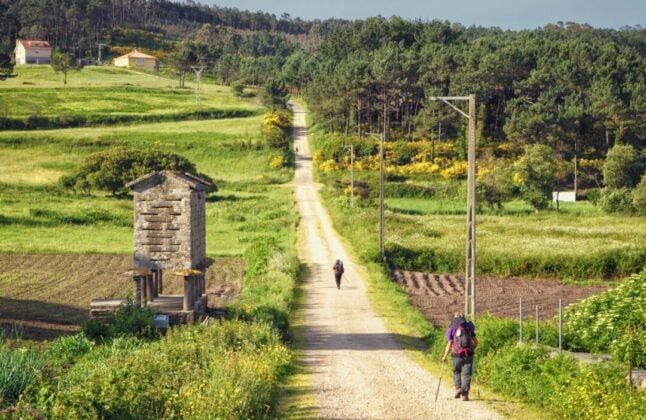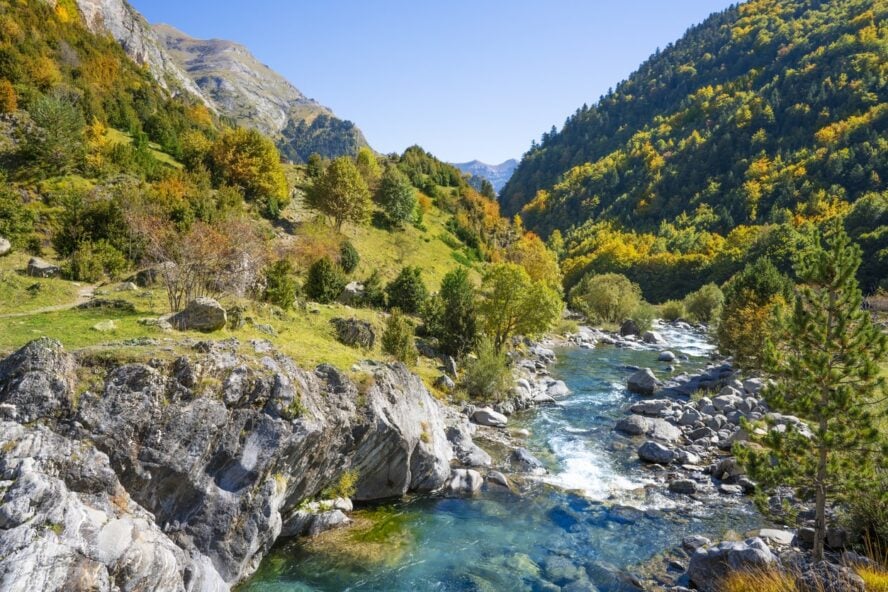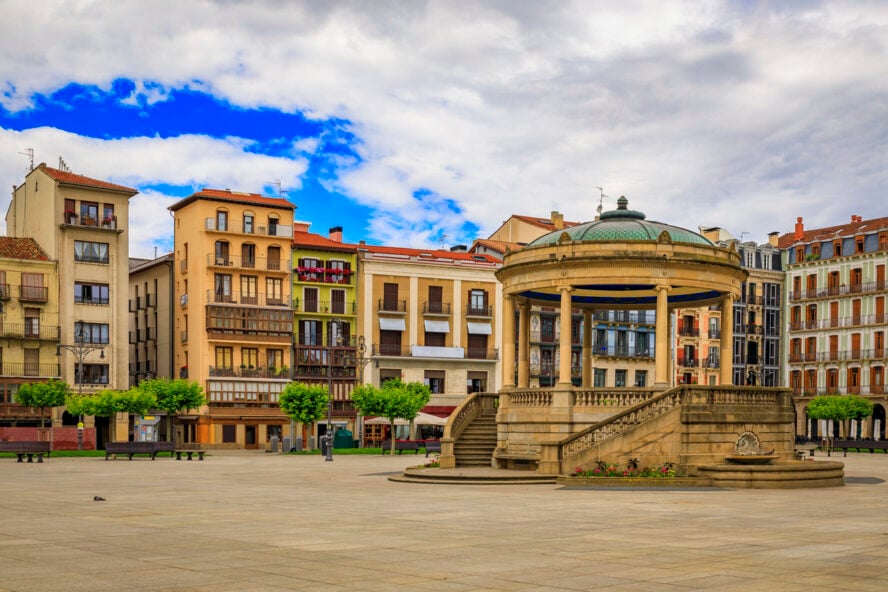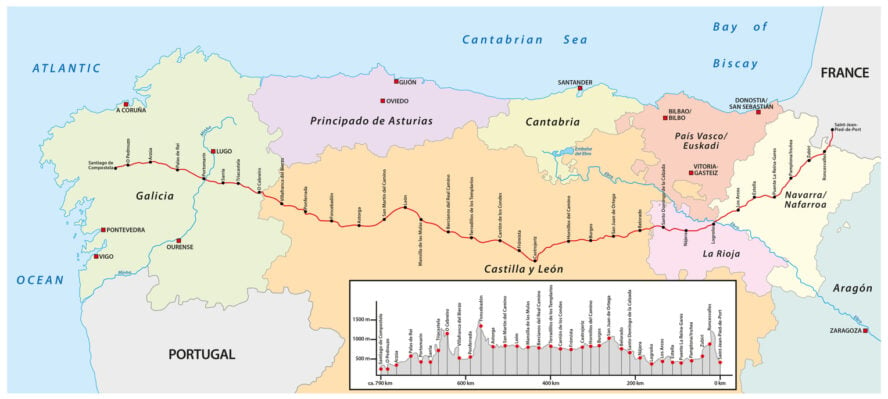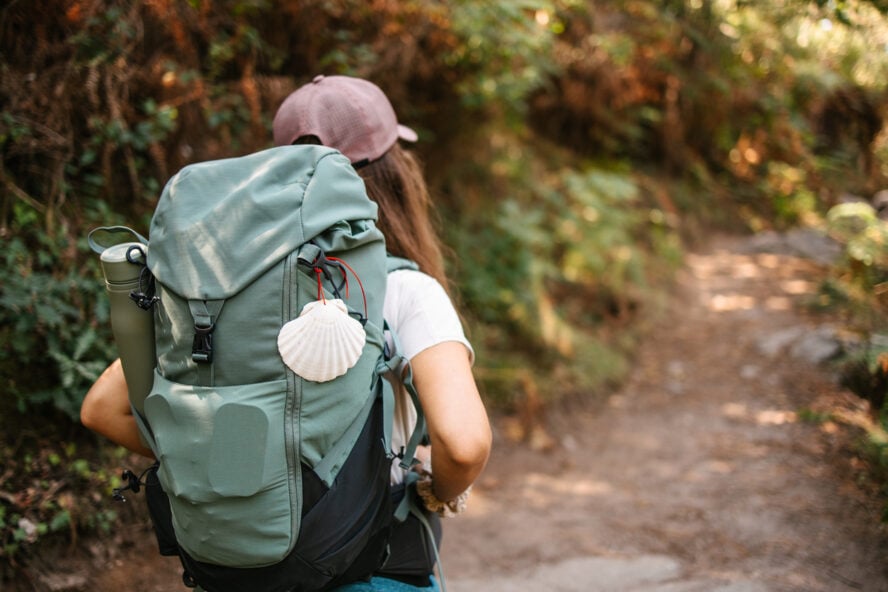Imagine the crunch of gravel under your boots, a scallop shell swaying from your backpack as you traverse rolling hills and ancient villages. The sun warms your face, and thousand-year-old castles loom on the horizon, whispering tales of pilgrims past. This is what the Camino Frances is all about.
The most popular route of the Camino de Santiago is a transformative odyssey blending physical challenge, cultural immersion, and personal reflection.
For over a millennium, pilgrims have walked this path, driven by faith, adventure, or a quest for meaning. Whether you’re a first-time trekker or a seasoned adventurer, the Camino Frances offers an unforgettable journey. Let’s dive in for some insider tips to make every step resonate with purpose.
What is the Camino Frances?
The Camino Frances, or French Way, is the crown jewel of the Camino de Santiago pilgrimage routes. The trail draws over 60% of total pilgrims with its vibrant tapestry of history, culture, and breathtaking landscapes.
The Camino Frances stretches across northern Spain to the sacred shrine of St. James in Santiago de Compostela. Well-marked paths, frequent albergues (pilgrim hostels), and charming cafes make it the most accessible Camino, which helps its popularity.
From medieval villages to sprawling vineyards, the Camino Frances is a journey through Spain’s heart and soul, promising memories that linger long after the trail ends.
The History of the Camino Frances
The Camino Frances traces its roots to the 9th century, when the tomb of St. James, one of Jesus’ apostles, was reportedly discovered in Santiago de Compostela. This revelation sparked a pilgrimage that grew into a medieval phenomenon, with pilgrims from France and beyond converging on this sacred route.
The trail, now a UNESCO World Heritage site, follows ancient Roman roads and medieval paths through historic Spanish cities like Pamplona, Burgos, and León. Along the way, pilgrims built hospitals, bridges, and churches, leaving a legacy of Romanesque and Gothic architecture.
Monarchs like Alfonso II and religious orders, such as the Knights Templar, protected and promoted the route, cementing its status as a spiritual and cultural artery.
Today, the Camino Frances remains a living testament to centuries of faith, resilience, and human connection. A chance for modern pilgrims to walk in the footsteps of history.
Who is the Camino Frances for?
The Camino Frances is the most welcoming Camino de Santiago route. Everyone’s doing it, from kids, seniors, and casual walkers to seasoned hikers looking for a challenge.
Its excellent infrastructure—clear trail markers, frequent albergues, and abundant cafes—makes it ideal for beginners, while its 780 km length offers a challenge for experienced trekkers.
Social butterflies will revel in the camaraderie. You’ll have plenty of opportunities to swap stories over tapas with pilgrims from across the globe. If you’re inspired by films like The Way or crave a blend of cultural highlights, which include both Gothic cathedrals and Rioja wine walks, the French Way is for you.
It’s also perfect for pilgrims seeking flexibility: you can walk the full route for a month or tackle the final 100 km to earn the Compostela certificate. Families, solo travelers, and even cyclists find the Camino Frances accessible.
Things You Need To Know About the Camino Frances
How Long is the Camino Frances?
The Camino Frances spans an impressive 780 km (485 miles).
The route winds from the rugged hills of the Pyrenees in France to the sacred cathedral in Santiago de Compostela. It crosses a colorful tapestry of Spanish regions and landscapes.
Where Does the Camino Frances Route Start?
The classic Camino Frances route begins in Saint-Jean-Pied-de-Port, a charming French village nestled at the foot of the Pyrenees.
With its cobblestone streets, red-shuttered houses, and medieval bridge over the Nive River, this picturesque starting point sets a magical tone. Pilgrims gather here to collect their pilgrim passport, stamp their first credential, and steel themselves for the challenging climb into Spain. With its vibrant energy, coupled with its historic charm, Saint-Jean-Pied-de-Port is the perfect launchpad for the Camino Frances.
Where To Fly Into For the Camino Frances?
Getting to Saint-Jean-Pied-de-Port is straightforward.
The closest major airport is Biarritz Airport (BIQ) in France, about 45 km away. The airport offers easy bus or taxi connections to the trailhead.
Alternatively, you can fly into Pamplona (PNA) or Bilbao (BIO) in Spain, both within 2-3 hours by bus or train.
For international travelers, Madrid (MAD) or Barcelona (BCN) are major hubs with reliable onward transport—buses, trains, or rental cars—to Saint-Jean-Pied-de-Port.
How Long Does It Take to Walk the Camino Frances?
The full Camino Frances typically takes 30-35 days.
Pilgrims usually average 20-25 km of walking per day. This pace allows for rest days in hot spots like Pamplona or León, with time to explore and recharge. After all, the Camino Frances isn’t about rushing. It’s about taking it all in.
For those with limited time, the final 100 km from Sarria to Santiago is a popular choice. It takes most people 5-8 days. This shorter section, rich with Galician countryside and pilgrim camaraderie, still qualifies you for the Compostela certificate.
Section hikes are also an option. You can hike segments like Pamplona to Logroño (4-6 days) or León to Sarria (7-10 days) for a taste of the route’s diversity.
Cyclists can cover the full route in 14-18 days if they’re averaging 40-60 km daily, or bike it in sections.
What Are the Stages of the Camino Frances?
The Camino Frances is divided into 33 stages, each roughly 20-25 km, though you can adjust distances based on your stamina and schedule. Key stages include:
-
Stage 1: Saint-Jean-Pied-de-Port to Roncesvalles (26 km) – A strenuous climb over the Pyrenees. You’re rewarded with sweeping views and the historic Roncesvalles monastery, now a pilgrim auberge.
-
Stage 7: Logroño to Nájera (29 km) – A stroll through La Rioja’s vineyards, with opportunities to sip world-famous wines.
-
Stage 13: Cirueña to Santo Domingo de la Calzada (22 km) – Crossing the Meseta’s golden plains, visiting the cathedral famous for its live chickens, tied to a local legend.
-
Stage 20: Frómista to Carrión de los Condes (19 km) – Flat, reflective Meseta trails. An easy and sort-of samey section, ideal for introspection.
-
Stage 27: Rabanal del Camino to Ponferrada (32 km) – Navigate mountainous terrain and visit the Templar Castle in Ponferrada.
-
Stage 31: Sarria to Portomarín (22 km) – The start of the final 100 km, with lush Galician forests and charming villages. 57hours’ guides provide detailed stage planning, securing comfortable lodgings and sharing local insights to enrich each day’s trek.
Where Does the Camino Frances Route End?
The Camino Frances culminates in Santiago de Compostela, at the awe-inspiring Cathedral of Santiago, where St. James’ shrine draws pilgrims to a triumphant close.
The Praza do Obradoiro buzzes with emotion—tears, hugs, and celebration—as pilgrims reflect on their journey.
Many choose to extend their adventure 90 km to Cape Finisterre, the “End of the World,” where dramatic cliffs meet the Atlantic Ocean and the waves strike the shore. This optional finale, a 3-4 day trek, offers a symbolic closure, with traditions like burning worn clothes at the lighthouse.
What Scenery Can I Expect on the Camino Frances?
The Camino Frances is a visual symphony, unfolding across diverse landscapes that shift with every stage.
You start the pilgrimage with the Pyrenees, where misty peaks and alpine meadows set a dramatic tone. In La Rioja, golden vineyards and rolling hills invite leisurely strolls, while the Meseta’s vast plains offer space for reflection and introspetion under endless skies.
As you enter Galicia, the path transforms into emerald forests, misty hills, where quaint villages like O Cebreiro, with its thatched-roof pallozas, create a fairy-tale atmosphere. Scattered throughout are historic landmarks, like Roman bridges, Burgos’ soaring Gothic cathedral, León’s vibrant plazas, that blend urban vibrancy with rural serenity.
Sunsets over wheat fields and misty mountain mornings add a magical touch. Every day, a new visual adventure.
Cultural Highlights Along the Route
The Camino Frances is a cultural immersion as much as a physical journey.
In Pamplona, famous for the Running of the Bulls, explore the historic Plaza del Castillo and savor pintxos (Basque tapas). Burgos’ UNESCO-listed cathedral, with its intricate spires, is a must-visit, while León’s stained-glass-filled cathedral rivals Europe’s finest.
Smaller villages like Eunate offer hidden gems, such as the octagonal Romanesque church, steeped in Templar lore. Along the way, you’ll encounter lavaderos (communal washing stones), medieval bridges, and lively festivals, especially in spring and fall.
Best Time to Walk the Camino Frances
The Camino Frances is walkable year-round, but we’d recommend spring and fall for milder weather and fewer crowds.
Summer means warm days (20-30°C/68-86°F) but busier trails and hotter open stretches—start early to beat the heat. Winter offers solitude but colder temperatures (5-15°C/41-59°F on average) and occasional rain, especially in Galicia. Pack layers for variable weather. You’ll need to be ready for everything, from scorching plains to foggy, rainy mountains.
Camino Frances Map
Training & Logistics
How to Train for the Camino Frances
Training for the Camino Frances ensures you enjoy its diverse terrain without burnout.
Start 2-3 months in advance, walking 15-20 km daily with your backpack (aim for 6-8 kg, 10% of your body weight) to build endurance. Incorporate varied terrain—hills, trails, or urban sidewalks—to mimic the route’s Pyrenees climbs and flat Meseta stretches.
Break in your hiking shoes to prevent blisters, and add strength exercises like squats, lunges, and core workouts for stability on uneven paths. If biking, log 30-50 km rides weekly, focusing on endurance and hill climbs. Yoga or stretching routines help with flexibility and recovery.
What to Eat on the Route
Fueling your pilgrimage is a delight, thanks to Spain’s rich culinary traditions.
Along the Camino Frances, indulge in Galician pulpo a la gallega (octopus with paprika), caldo gallego (hearty vegetable soup), and tarta de Santiago (almond cake dusted with powdered sugar). In La Rioja, we recommend trying the world-class wines and savoring some patatas a la riojana (potato and chorizo stew).
Most albergues and cafes offer menú del peregrino (pilgrim menus) for €10-15. These usually feature hearty dishes like Spanish tortilla, stews, and fresh bread. Make sure to carry portable snacks—nuts, dried fruit, energy bars—for long stretches between villages.
Bring a reusable water bottle. Potable fountains (fuentes) are plentiful. Guides will recommend the best local eateries, ensuring you sample authentic flavors without breaking the bank.
Where Can I Sleep?
The Camino Frances offers a range of accommodations to suit every budget and preference.
Albergues (pilgrim hostels) are the heart of the Camino experience, costing $10-20 per night for dorm-style beds with shared facilities. The coolest part about these communal spaces is that they foster camaraderie, swapping stories over shared dinners.
Private albergues, guesthouses, or hotels ($50-100+) offer more comfort and privacy, ideal for rest days in cities like Pamplona, Burgos, or León.
In smaller villages, you’ll find cozy, family-run casas rurales for a homely feel. Booking ahead is wise during peak seasons (spring and fall), especially for private rooms.
What to Pack for the Camino Frances
Packing light is the key here. Aim for a 6-8 kg backpack (10% of your body weight) to avoid strain. Here are our essentials:
-
Footwear: Broken-in hiking shoes or boots with good traction; consider trail runners for lighter weight.
-
Clothing: 2-3 quick-dry outfits (moisture-wicking shirts, pants/shorts, socks); fleece or lightweight jacket for cool evenings.
-
Weather gear: Lightweight rain jacket and pack cover for Galicia’s showers; hat and sunglasses for sun protection.
-
Sleep gear: Lightweight sleeping bag or liner for albergues; earplugs for shared dorms.
-
Essentials: Reusable water bottle (1L), basic first-aid kit (blister patches, bandages, pain relievers), trekking poles for hilly sections, small daypack for valuables.
-
Extras: Pilgrim passport for stamps, lightweight journal, and a small camera or smartphone for photos. Pack versatile layers for the weather changes.
Safety on the Camino Frances
The Camino Frances is one of the safest long-distance trails, with low crime rates and a supportive pilgrim community.
Well-marked paths and frequent villages make navigation straightforward, even if you’re hiking solo. The main challenges are weather-related—sudden rain or heat—so check forecasts daily and pack appropriate gear.
Minor risks like blisters or muscle strains can be mitigated with proper training and footwear. In remote sections, carry a charged phone and emergency contacts.
Budgeting for the walk
A budget-friendly Camino Frances is entirely possible, with daily costs averaging $80 for frugal pilgrims.
You can keep the expenses low by staying in albergues ($10-20/night), eating self-cooked meals, and using the free water fountains to their fullest. For more comfort, expect $150-250 daily, including private accommodations ($50-100), restaurant meals (€15-30), and occasional activities like museum visits.
Flights to Biarritz, Pamplona, or Madrid, plus gear (hiking shoes, backpack), add to upfront costs. Guided tours streamline budgeting, bundling cozy lodgings, luggage transfers, and insider tips on affordable tapas spots. You’ll get value without sacrificing experience.
A life-changing journey awaits
The Camino Frances is a journey through Spain’s history, culture, and soul.
From the Pyrenees’ rugged peaks to Santiago’s majestic cathedral, every step weaves together stunning scenery, vibrant camaraderie, and moments of profound reflection.
Whether you conquer the full 780 km, tackle the final 100, or just sample a section, the Camino Frances is sure to transform you.

